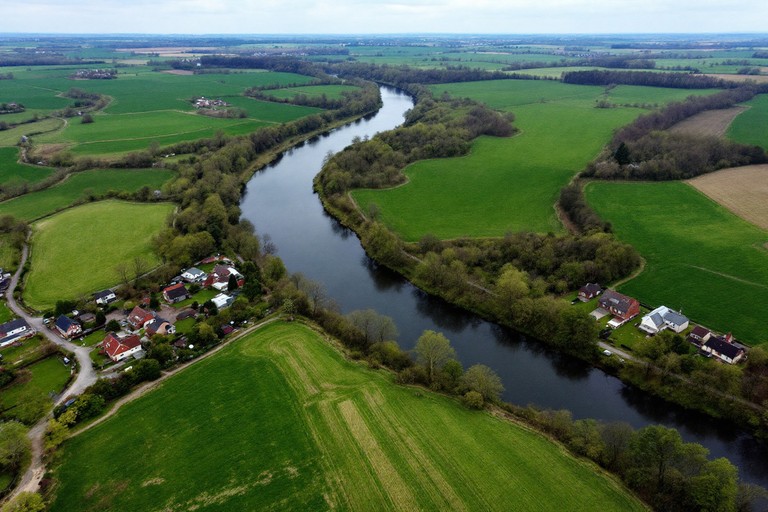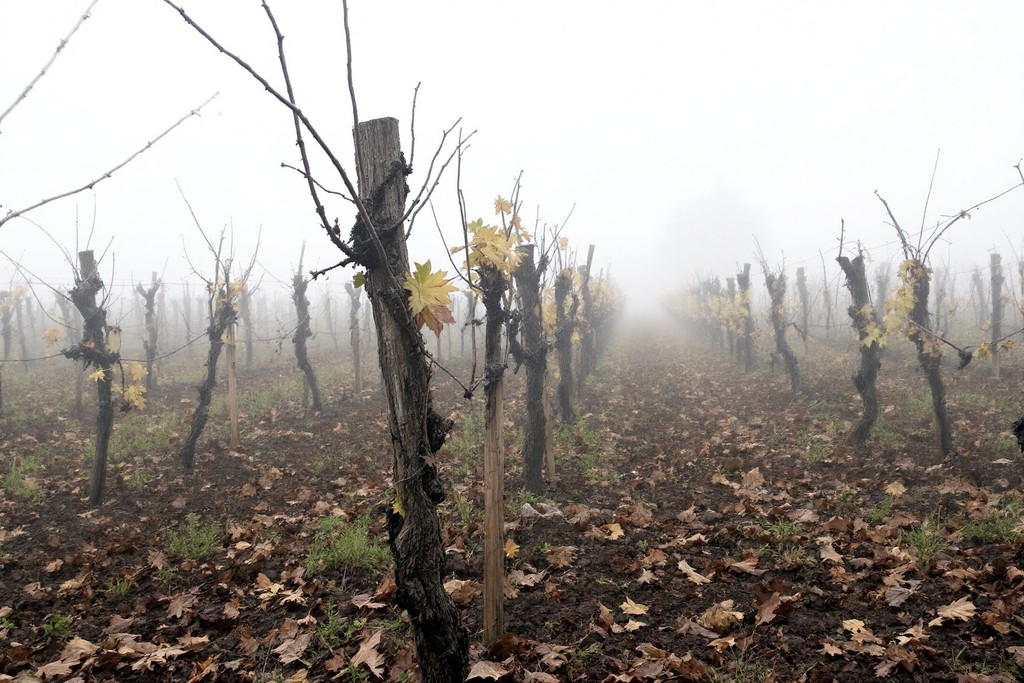
The return of spring marks a crucial period for the vine, called budding. As temperatures rise and days lengthen, the vine comes out of its winter dormancy. Buds begin to swell and burst to make way for new shoots. This moment is decisive for the future harvest as it conditions the formation of future grape clusters. During this phase, vine management is imperative. Spring pruning is often carried out to prune less vigorous parts and direct the growth of young shoots. Moreover, the soils are fertilized, and irrigation is adjusted to ensure an adequate supply of nutrients. Spring weather conditions also influence the quality of the vines. Late frost, for example, can damage young shoots and compromise the harvest. Conversely, a season neither too dry nor too wet promotes balanced growth. Winegrowers closely monitor weather forecasts to intervene if necessary. The first leaves emerge and begin photosynthesis, essential for glucose production, the basis of the energy needed by the plant. Bloom, which usually occurs between May and June, is a pivotal stage. Good pollination means well-formed clusters with high potential in fruit quality. Thus, spring is not only a season of rebirth for the vine but also a period of hard work and vigilance for winegrowers, laying the groundwork for a promising harvest.
When summer sets in, the vine enters an essential phase: veraison. This is when grape berries start to ripen, changing color and accumulating sugar and flavors. This process, influenced by the combination of heat and light, is crucial for the organoleptic character of future wines, whether red, white, or rosé. During this summer period, managing sunlight is paramount. Too much sun and the possibility of burns on the berries increases, which can alter their flavor. Also, irrigation becomes a delicate issue. Too much water could dilute the aromatic compounds of the grapes, while insufficient hydration could slow down the growth and ripening of the fruits. Winegrowers often use mulching or shading techniques to regulate soil moisture and temperature. Heatwaves are another challenge of summer. Extreme temperatures can speed up ripening but reduce quality. Producers then balance foliage management to allow sufficient aeration and provide shade to the clusters. Precision viticulture techniques, using sensors and weather data, play an increasing role in this management. Grapes accumulate not only sugars but also tannins, phenols, and organic acids, all essential for complex wines. This ripening period determines the aromatic profile and tannic structure of wines. Cool nights, offset by warm days, are ideal for developing acidity, ensuring good wine balance. Ultimately, summer shapes the essential characteristics of grapes and, consequently, wines. Winemakers are actively engaged in monitoring and adjusting cultural practices to ensure that each grape variety expresses its full potential.

Autumn is the most awaited season by winegrowers: it’s harvest time. These harvests mark the culmination of months of meticulous care and hard work. The precise timing of the harvest is crucial as it determines the final quality of the grapes. Harvesting can begin as early as September and extend until October, or even November for some late varieties. The main criterion for determining the harvest date is grape maturity, measured in terms of balance between sugars and acids, as well as aroma concentration. In high-quality vineyards, clusters are often hand-picked to avoid damaging the fruit. Weather conditions during harvest greatly influence quality. Rainy weather can cause gray rot, affecting the purity of the grapes. Conversely, optimal conditions without excessive heat allow for harvesting healthy fruit concentrated in aromas. Autumn also signifies the start of fermentations. Once harvested, grapes undergo a series of winemaking processes, from destemming to pressing. Aging in tanks or barrels begins, further influencing quality. During this season, maintaining grape integrity is crucial. Clusters delicately transported to the presses prevent alterations. Well-managed harvesting not only reflects the organic quality of the grapes but also reveals the potential expression of the terroir, producing a unique wine. It is fascinating to see how decisions made at this stage have a direct impact on the wine’s taste signature. Early harvests may result in more lively and acidic wines, while later harvests may offer sweeter and more alcoholic wines. Thus, autumn is a period of choice and careful observation, shaping the personality of a vintage.
Winter marks a period of dormancy for the vine, an essential rest after intense growth and production seasons. During these cold months, vines enter a dormant state, thus protecting buds from the harshness of winter. This winter rest is fundamental, allowing the vine to rejuvenate and prepare for the next vegetative cycle. One of the essential aspects of winter viticulture is pruning. Winter pruning, also called dormant pruning, is practiced as soon as the vine has lost its leaves. This practice aims to control the vigor and shape of the vine, removing old and non-productive parts to encourage new growth in the spring. This operation is crucial for the quality and quantity of future harvests. Winter is also an ideal time to carry out maintenance work in the vineyard. Winegrowers can repair trellising systems, ensure soil maintenance, and install new irrigation systems if necessary. The vine’s rest does not mean inactivity for winegrowers; on the contrary, it is a period of intense preparation. This season also involves soil management. Winegrowers may decide to plant grass between rows to maintain soil structure and prevent erosion. Moreover, soil analyses are often carried out to adjust fertilizer inputs and plan nutritional needs for the coming growth season. Winter weather conditions also play a role in this rest period. Cold but not extreme temperatures are ideal for ensuring good dormancy. However, frost episodes can cause damages if temperatures drop abruptly. Winegrowers can use protection techniques such as applying mulch or covers to protect the most fragile vines. Finally, winter is a period of observation and reflection. Winemakers analyze the year’s harvest, adjust their viticultural practices, and prepare to face new challenges for the next season. The vine’s cycle, marked by periods of intense work and rest, reflects a harmony with nature, where each season brings its responsibilities and promises for a future quality harvest.

The impact of seasons on the vine and grape quality is undeniably influenced by the local climate. Temperature, rainfall, and even air humidity play crucial roles at each stage of the vegetative cycle. Understanding these seasonal climatic factors is essential for adapting and ensuring the resilience of viticultural practices. Spring temperatures influence budding. Warmer springs with fewer late frosts promote early development, while cooler conditions can delay growth. Moreover, a rapid temperature rise can cause ‘coulure’ where flowers fail to fruit, thus reducing yield. Summer is dominated by the question of heat and water management. Summer precipitation impacts irrigation and grape ripening. In regions where rain is scarce, artificial irrigation becomes necessary. However, an overly rainy summer can dilute the grapes’ natural sugars, reducing their concentration and potentially affecting wine robustness. As autumn approaches, cool nights coupled with sunny days are ideal for the complete ripening of berries. Dry weather during harvesting is essential to prevent rot and ensure high-quality fruit. Autumn rains can force early harvests, thus altering the wine’s character. Autumn climatic variations are therefore crucial for the harvest window. During winter, stable and cold temperatures ensure adequate dormancy. Frost episodes can damage the vine’s conduction systems, leading to lasting losses. Conversely, a too mild winter could interrupt the vine’s rest, jeopardizing its vitality for the following year. Overall, climatic conditions also dictate the use of phytosanitary products and specific cultural techniques. Advanced weather forecasting helps winemakers plan and adjust their interventions. Fine knowledge of these factors and their intelligent management are essential for producing optimally quality grapes, ensuring viticulture’s continuity in the face of climate unpredictabilities. Thus, each season, with its climatic specifics, imposes its challenges and opportunities. Mastery of these elements allows winemakers to make the most of what nature offers, shaping each wine’s unique character.
Necessary cookies are absolutely essential for the website to function properly. This category only includes cookies that ensures basic functionalities and security features of the website. These cookies do not store any personal information.
Any cookies that may not be particularly necessary for the website to function and is used specifically to collect user personal data via analytics, ads, other embedded contents are termed as non-necessary cookies. It is mandatory to procure user consent prior to running these cookies on your website.